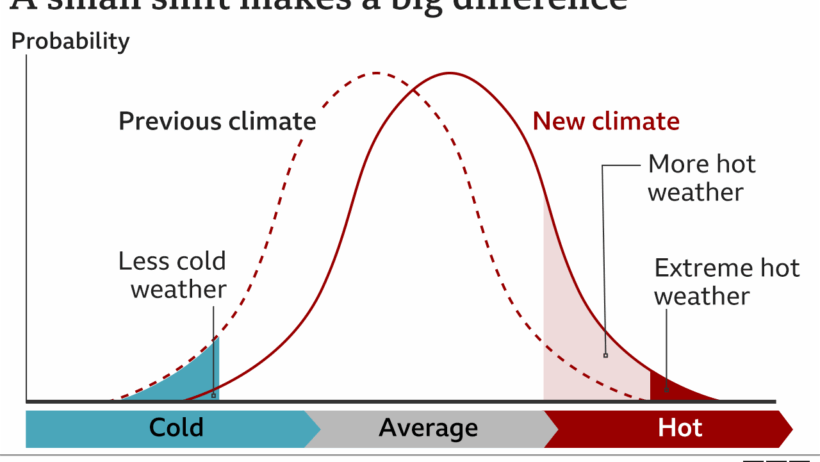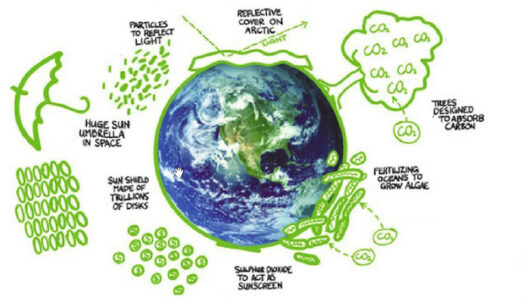Global warming is often talked about in terms of its predictable consequences: rising sea levels, melting ice caps, and more frequent heatwaves. Yet, an apparent contradiction arises in the climate discourse—how can the same phenomenon that intensifies droughts also lead to devastating floods? This paradox of climate change presents a complex challenge, prompting a deeper inquiry into the dynamics at play. In exploring this issue, we might ask: can we find harmony in a world where droughts and floods coexist as symptoms of the same underlying affliction?
At its core, the mechanism connecting global warming to both floods and droughts lies in the alteration of atmospheric behaviors. As average global temperatures rise due to increased greenhouse gas emissions, the Earth’s water cycle becomes more dynamic and unpredictable. Warmer air can hold more moisture, which contributes to increased precipitation events, thus heightening the risk of flooding in certain regions. Conversely, the same climatic changes can lead to extended periods of aridity in other areas, giving rise to droughts.
Understanding this duality requires an examination of the water cycle itself. The water cycle is an intricate system driven by solar energy, where evaporation, condensation, precipitation, and runoff occur in a delicate balance. However, global warming disrupts this equilibrium. The higher temperatures accelerate evaporation rates, leading to drier soils, reduced water tables, and diminished surface water levels in certain locales. In regions already vulnerable to dryness, such changes can tip the balance towards drought.
Simultaneously, increased evaporation enriches the atmosphere with moisture. Weather systems, now saturated with water vapor, can produce intense storms when conditions align. These storms can unleash torrential rain over a short duration, overwhelming drainage systems and leading to flash floods. The conundrum is that areas experiencing drought may be located close to regions grappling with flooding due to shifting weather patterns. This uneven distribution of rainfall is evidence of climate complexity, where localized climates can swing dramatically based on larger climatic changes.
The hydrological implications of climate change extend beyond mere precipitation patterns. Changes in the timing of snowmelt and rainfall can exacerbate both situations. For instance, as glaciers and snowpacks melt earlier in the spring, regions that depend on this seasonal supply of water for hydration may experience shortages during the summer months. Conversely, the sudden release of meltwater during warmer periods can lead to temporary surges in river levels, creating a flood risk downstream.
Moreover, human interventions in the natural landscape often exacerbate these challenges. Urbanization, deforestation, and agricultural practices can all alter natural runoff patterns, diminish soil health, and reduce the land’s ability to absorb rainfall efficiently. In cities, impervious surfaces like concrete and asphalt amplify flooding risks as water cannot percolate into the ground, instead, it flows directly into drainage systems, which can become quickly overwhelmed. Additionally, the deforestation of watersheds can lead to both decreased rainfall interception and increased evaporation rates, generating conditions that promote both drought and flood situations.
Furthermore, climate change impacts specific regions more severely than others, leading to the emergence of “climate refugees.” Communities in areas prone to flooding are often displaced, only to find themselves in regions experiencing drought. This mobility underscores the human cost of climate change—an existential challenge that requires a dual response addressing both water scarcity and flooding risk.
Addressing the paradox of climate change necessitates comprehensive strategies and solutions. For starters, it is crucial to enhance our understanding of local climate variations through improved data collection and analysis. Climate models must incorporate localized factors that allow for better predictive capacities. By understanding where and when to expect events of heavy rainfall versus dry spells, communities can develop adaptive management practices.
On the policy front, investing in sustainable water management practices becomes imperative. Enhanced rainwater harvesting systems, advanced irrigation techniques, and improved drainage infrastructures can help mitigate both flood and drought risks. Moreover, reforestation and wetland restoration projects can play a significant role in restoring water balance within ecosystems. Healthy wetlands act as natural buffers to absorb excess rainwater while contributing to groundwater recharge.
Education and community engagement are paramount in fostering resilience. Local populations must be empowered with knowledge and resources to understand their unique vulnerabilities related to climate extremes. Developing community-based action plans that address both floods and droughts can help create a well-prepared populace that can adapt to changing conditions.
In a world where dryness and deluge can share the same landscape, we must adopt an intricate and multifaceted approach to combat global warming. Eradicating this paradox will require collaborative efforts from governments, scientists, and citizens alike. Will we rise to the challenge of reconciling these opposing forces and create a sustainable future? The answer lies in our collective resolve to address the intricate relationship between climate change, droughts, and floods—a commitment to a balanced ecological existence.





